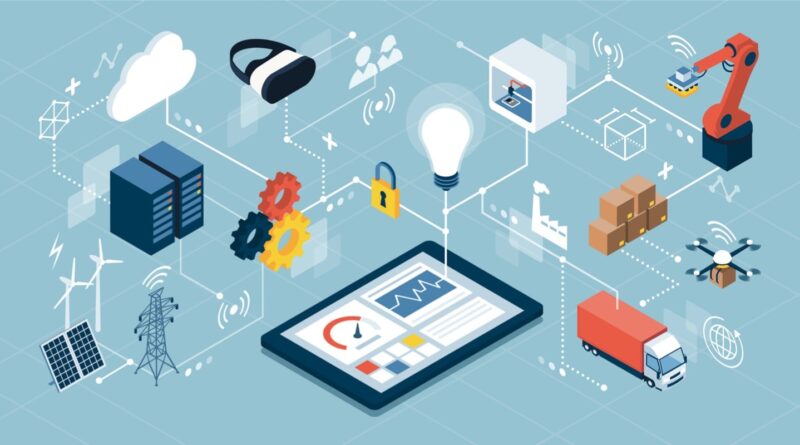Using IoT Data Plan as a Connectivity Option
To provide data connection between various IOT devices, various data providers have developed IoT data plans. With such data plans, you can connect your devices and pay-per-use. The data plans can scale depending on your needs. Thus, it is crucial to know what to look for when considering a data plan. There are a few factors and criteria to consider when coming up with an IoT data plan for your business. Regardless of whether you are starting with IoT deployment or have several connections installed, the list below can be of great help to get the most out of your IoT data plan.
Using IoT data plan as a connectivity option
IoT connectivity through IoT data plans and IoT sim cards are not the only option for connecting the IoT devices. Alternatives include Bluetooth, Wi-Fi, lower Power Wide-area Networks that have been designed specifically for IoT implementations.
However, cellular connectivity is still a popular option in many IoT devices. This is because of its unique advantages. Among the mechanisms that can enable global IoT connectivity is cellular IoT and the use of the satellite. Connecting IoT devices using a data plan is more affordable compared to satellite connections.
We categorize cellular IoT connectivity as a high-power consumption, high coverage range, and bandwidth when discussing the technical requirements of the IoT connectivity solutions. Therefore, you leverage the IoT solution’s bandwidth and its large coverage area. Below are the key factors to consider when considering an IoT data plan.
What should you consider when choosing an IoT data plan?
Roaming and reliable coverage
When choosing between various IoT data plans, reliable coverage should be among the first considerations. Unstable signals and downtimes can prove costly in IoT deployments. Although it may not be so at the beginning, in the long run, it can cost you a lot of money and cause reputational damage if you are serving your customers with your IoT system.
If you plan to scale your IoT deployment to many geographic locations, you may need IoT data plans that can allow you to scale it. Investing in an IoT data plan with reliable global coverage and an affordable one is beneficial in the long run.
Optimal cost-efficiency
What is the price of the data plan? It is essential to note that various types of IoT devices and deployments use different data plans. Thus, it would be best if you considered how flexible the IoT data plan is. It helps your IoT deployment with scaling when it grows larger or shrinks in the future.
For instance, although a data plan may be cheap currently, it may prove expensive in the future in case your deployments expand. Besides that, the IoT plan provider may charge extra fees when you increase the number of devices. Hence, the total cost of ownership (TCO) is not as optimal. The IoT data plan provider you choose to invest with should offer a cost-efficient plan and allow for future scaling.
Cellular network technologies
Cellular network refers to different technologies. Most people use 4G LTE, although 5G is quickly gaining traction and popularity among various users. This is because of faster bandwidth. The support for cellular technologies differs from the IoT device. A device might only support a 3G or 2G connection, while modern ones may even support 5G. Therefore, it is critical to invest in an IoT data plan that accommodates your IoT devices and considers the various connection technologies.
Pricing scheme
The pricing scheme for the IoT data plan should be both predictable and transparent. However, if the bills for your IoT data plan only involve one or two IoT devices, the pricing scheme may not be a big concern. However, as the IoT system grows more prominent, managing your data plans and sorting through your IoT bills can be time-consuming and expensive.
Therefore, you would need to partner with an IoT data plan provider with transparent contracts with a predictable pricing scheme. The pricing scheme should additionally be scalable depending on your needs. Some data plans charge hidden fees for international roaming, data coverages, among other charges. Therefore, it is essential to read their pricing policy carefully before deciding which provider to invest in.
Future proof specialized and leading IoT service provider
Do you want an IoT data plan that performs well for your IoT deployment life cycle? If so, ensure that the service provider has an IoT background. When you use the services of a leading IoT partner, they offer you the resources and the experience that can enable your deployment while offering support and critical infrastructure to help your business grow. Inquire about the plans of a provider before committing, as they may even plan on shifting to other areas.
Data security
The IoT deployment may receive and send huge data volumes. Therefore, among the most critical concerns should be security. It would be best to protect the customer information’s privacy and the integrity of their data.
Ensure that your IoT data plan provides adequate data routing and transport. For instance, it should adequately implement APN and VPN, encryptions, and multi-layer infrastructure, among other protection mechanisms. The IoT data plan provider must offer 24/7 customer support and monitoring. It is crucial in case of a data breach event and other issues with cybersecurity.
Device management and connectivity with an in-built analysis and provisioning
It can be time-consuming and costly to manage services and connections within your IoT deployments. Thus, the IoT data plan provider should give you the tools to manage connectivity and your devices confidently. It applies to devices connected to local area networks and those globally connected over various networks and wireless protocols.
You should ensure that you can analyze and manage all the connections from a single interactive interface. The interface should have remote configuration and provisioning, zero-touch onboarding, allow remote troubleshooting and monitoring. Having these capabilities in one place allows you to optimize performance and cost control for your IoT deployments effectively. To l get the best from your IoT data plan, you need to understand the network health and adjust the pricing plans retroactively. Thus, you need an IoT data plan provider who provides life cycle management, self-care subscriptions, usage controls, and real-time diagnostics that allow you to manage your data plans automatically.
Conclusion
The above factors can be critical when evaluating the potential IoT provider. When you consider them, your IoT deployments can have uninterrupted connections with each other and share the data over the internet. IoT data plans should be scalable with your business at a cost that corresponds with the benefits.



